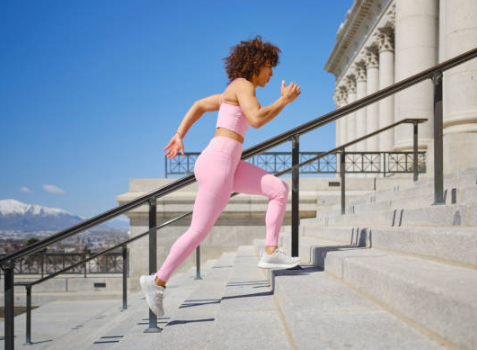We all know the benefits of regular exercise are endless — but let’s be honest, doing the same workouts day in and day out can get… boring. Switching things up with an outdoor workout every now and then can help keep things fresh and add some extra perks to your fitness routine.
Why Work Out Outdoors?
It Keeps Your Body Guessing
Outdoor terrain is unpredictable. Uneven ground, inclines, and changing conditions force different muscle groups to engage, boost stability, and challenge your coordination. This “element of surprise” can help you make real progress in strength and functional fitness.
You Get Some Sunshine
More specifically, you get a natural boost of vitamin D while you move. This essential nutrient supports strong bones, a healthy immune system, and overall wellness. Just don’t forget the sunscreen!

It’s Good for Your Mind and Body
Fresh air, greenery, and natural light do wonders for your mood. Being outdoors can ease stress, elevate your mood, and even help you sleep better. On low-energy days, a deep breath of fresh air might be just what you need to get moving.
How to Plan a Great Outdoor Workout
Think Ahead
Start by deciding what kind of workout you want and where you’ll do it. Planning to run? Map out your route or find a spacious spot in your backyard or a local park. Doing strength, conditioning, or HIIT? Pick a workout style in advance so you’re not scrambling last minute. A little planning now saves time (and frustration) later.
Get the Right Gear
What you use during your outdoor workout makes a big difference. Here’s what to consider:
-
No Equipment Needed: Bodyweight circuits are a great go-to for outdoor workouts and are easy to do anywhere.
-
Resistance Bands: These are super portable and perfect for a full-body strength session on the go.
-
Kettlebells: Compact, convenient, and cardio-friendly — kettlebells are fantastic for outdoor strength and conditioning.
-
Yoga Mat: Perfect for stretching or cooling down in the fresh air.

Listen to Your Body
Pushing your limits is great — but be mindful of heat, especially in the sun. Bring plenty of water and hydrate between sets. For cardio sessions or long runs, schedule water breaks. If you feel lightheaded, stop and cool off in the shade or use a damp towel around your neck.
Dress the Part
Unlike the climate-controlled gym, outdoor workouts demand more thought than just “cute activewear.” Choose shoes based on the terrain, and wear lightweight, breathable clothes to stay cool.
Pro Tip: Your body heats up as you get moving, so start with layers or wear clothing that allows you to regulate your temperature. Running early or late? Wear bright or reflective gear so drivers, cyclists, and other runners can see you clearly.
Check the Weather
Excited to head out? Don’t forget to check the forecast. Rain isn’t the only thing to consider — storms, humidity, wind, and high heat indexes can all impact your performance and your outfit choices. And don’t forget to check the air quality in your area. Sometimes, outdoor workouts may not be ideal.
Don’t Let the Sun Sabotage Your Gains
Sunburn and muscle soreness can ruin an otherwise great workout. And let’s face it — awkward tan lines aren’t cute either. Use water- and sweat-resistant sunscreen, and bring a travel-size tube or stick for touch-ups. Light, breathable clothes help too. A hat and sunglasses can protect your eyes — just be careful not to knock the brim into anything during burpees (yep, it happens).
Put Safety First
Unlike the gym, working out in public spaces means you need to be more aware of your surroundings. Always carry your phone and ID. Keep your music at a volume where you can still hear what’s going on around you. Most importantly, let someone know where you’re going and when you plan to be back.

